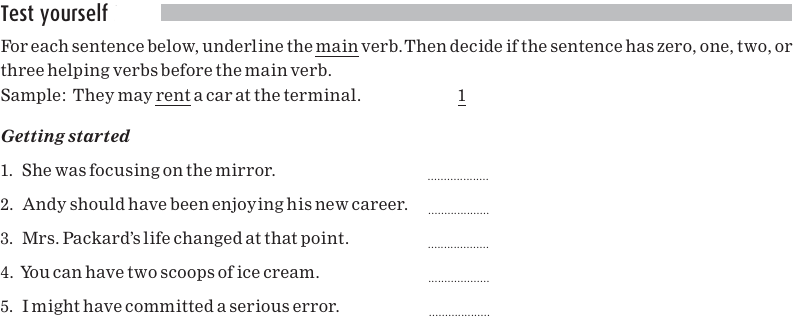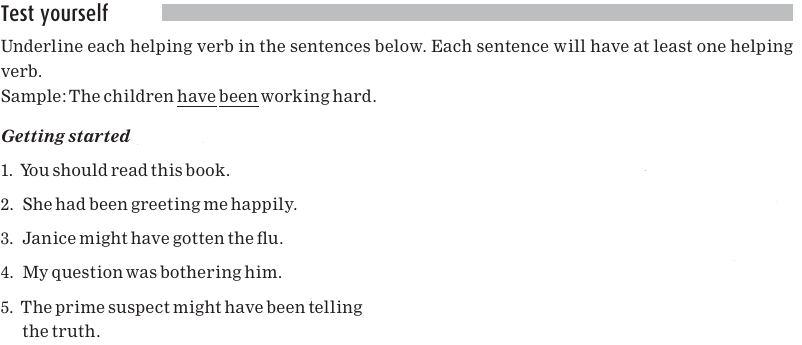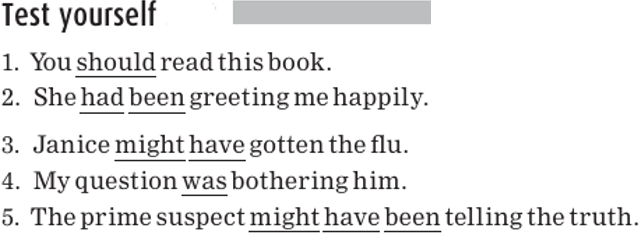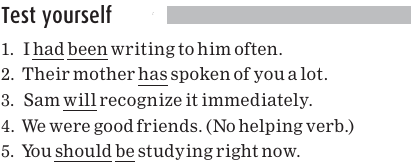
Combining auxiliary verbs
 المؤلف:
EVELYNP.ALTENBERG & ROBERTM.VAGO
المؤلف:
EVELYNP.ALTENBERG & ROBERTM.VAGO
 المصدر:
English Grammar Understanding the basics
المصدر:
English Grammar Understanding the basics
 الجزء والصفحة:
P148-C12
الجزء والصفحة:
P148-C12
 2025-11-12
2025-11-12
 17
17
Combining auxiliary verbs
All the sentences with helping (auxiliary) verbs that we’ve looked at so far have had only one helping verb. It’s possible, however, for a sentence to have more than one helping verb. Here are some examples of sentences with two helping verbs; the helping verbs are underlined. (Remember that there are three kinds of helping verbs: (a) modals (e.g. should, can, might), (b) have, and (c) be)
1. She should have studied. (modal+ have)
2. She may be studying. (modal+ be)
3. She has been studying. (have+ be)
When a sentence has two helping verbs, which helping verb is first? If a sentence has a modal, that will always be the first helping verb, as you can see in sentences 1 and 2. If a sentence has both have and be as helping verbs, have will always be first, as you can see in sentence 3.
Can you think of a sentence with three helping verbs? Sentences 4 and 5 have three helping verbs (underlined):
4. She should have been studying.
5. Mary might have been looking at him.
If there are three helping verbs, they are always in the following order: modal + have + be, as you can see from sentences 4 and 5. And if there are only two helping verbs, they’re still in this relative order, with modal first, and have before be.
Quick tip
A sentence can have zero, one, or more than one helping verb. If there is more than one, they will always be in the following relative order: modal +have +be.

Answers


Answers


Answers


Answers

 الاكثر قراءة في Auxiliary verbs
الاكثر قراءة في Auxiliary verbs
 اخر الاخبار
اخر الاخبار
اخبار العتبة العباسية المقدسة


